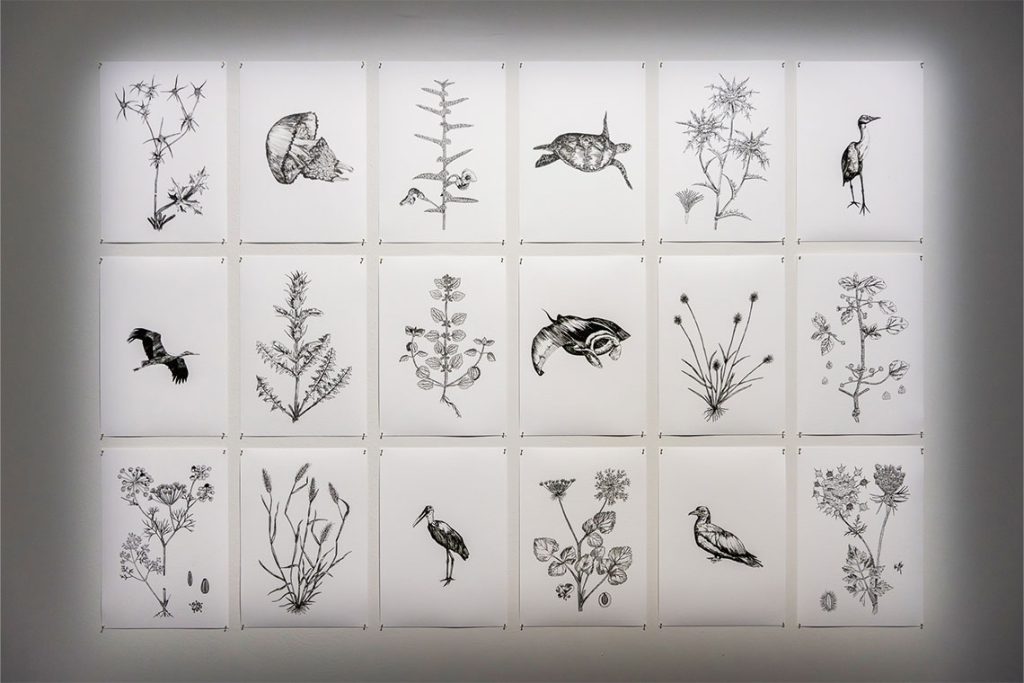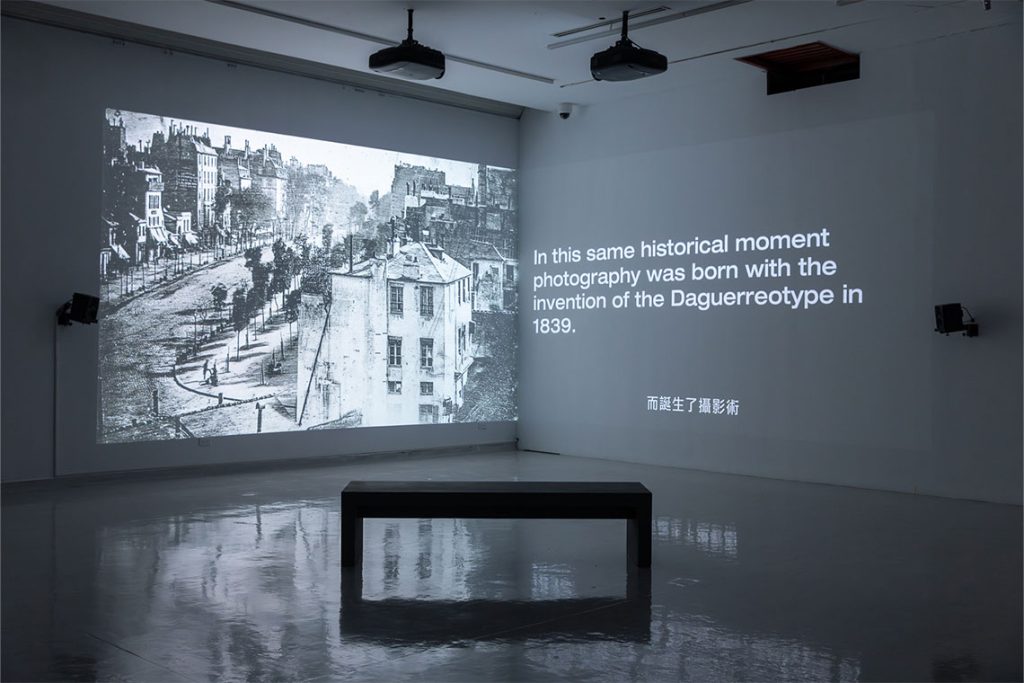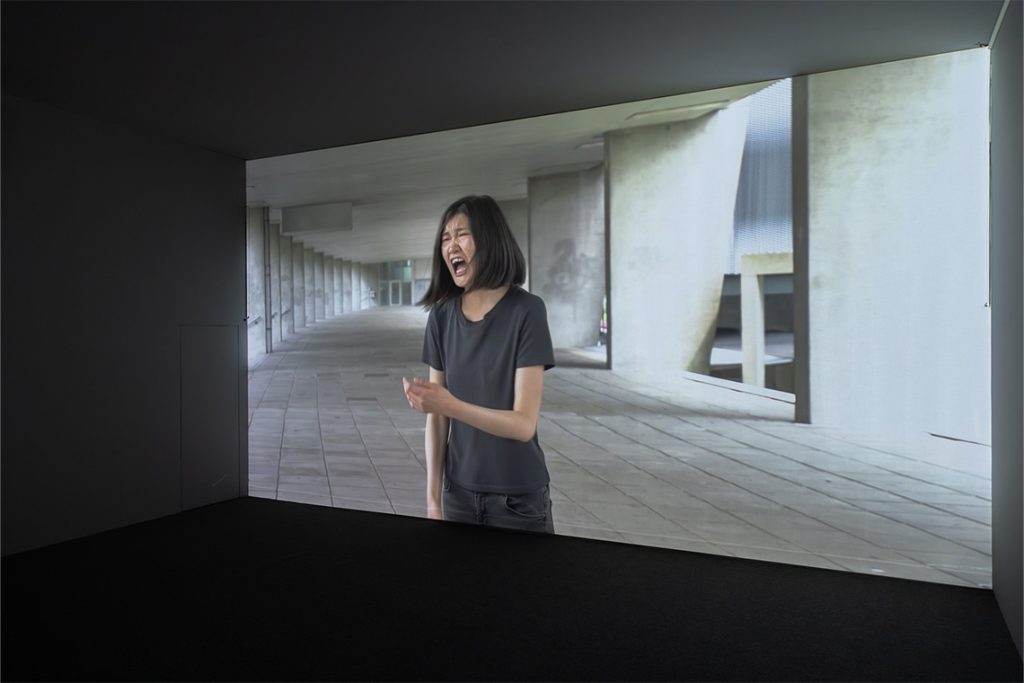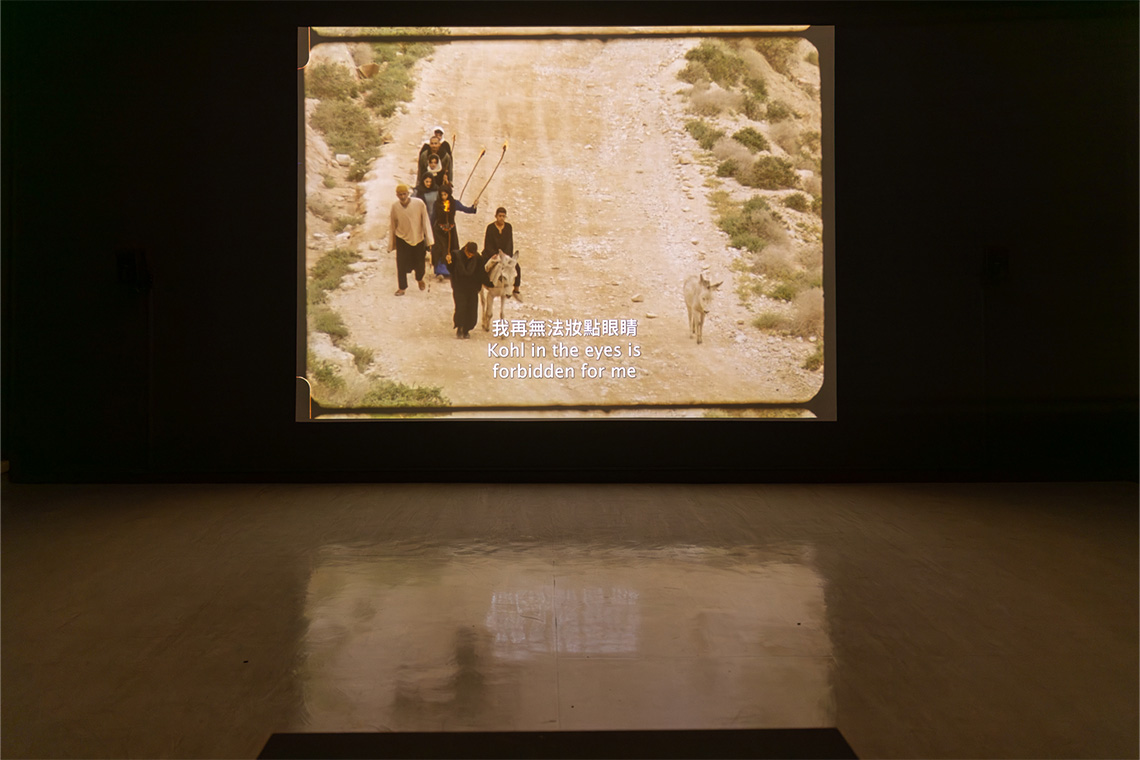The latest edition of the Asian Art Biennial offers respite and optimism in its exhortation to take a deep breath and contemplate the world around us.
The 2024 Asian Art Biennial has returned to the National Taiwan Museum of Fine Arts (NTMoFA) in Taichung, opening on 16 November under the theme How to Hold Your Breath. The ninth edition brings together 35 artists and groups from more than 20 countries, featuring a total of 83 works that include 19 new commissions. Led by Taiwanese independent curator Fang Yen Hsiang, this year’s team is joined by curators Anne Davidian, Merv Espina, Haeju Kim and Asli Seven. As Fang explained at the opening, How to Hold Your Breath “[is] a call, imagine it as a deep dive before facing an uncertain and indeterminate future”. The curators’ collaborative efforts offer a vision that embraces breath as a conceptual metaphor for navigating the uncertainties of contemporary life. Many works are seemingly insignificant gestures, yet form a strong force of resistance.
The exhibition begins with Pak Sheung Chuen’s single-channel video Breathing in a House (2008). In this quiet yet potent work, the artist collects his breath in transparent plastic bags, gradually filling his residency room and reminding the audience that we live in between these inhalations and exhalations. The fragility of life and the pauses that punctuate these actions constitute powerful moments of hope. Unlike the previous two editions of the Asian Art Biennial, which emphasised artists from Southeast and East Asia, How to Hold Your Breath shifts its gaze toward those from the Middle East and Central Asia. This move in emphasis not only broadens the geographical scope that was overlooked in past editions, but also introduces fresh perspectives on the urgency of breath, space and survival in unfamiliar landscapes.

Marwa Arsanios’s Who is Afraid of Ideology? Part 4: Reverse Shot (2022) continues her ongoing research project examining the entrenched ideologies that surround the ownership of natural resources. This chapter focuses on the question of agriculture, envisioning nonexpropriative alternatives to land use. On an adjacent wall, Arsanios presents Resilient Seeds (2016), a series of intricate illustrations of plants and animals observed at a toxic waste site in Beirut. This emerging ecology symbolises the unpredictability and malleability of urbanism and industrialisation. Arsanios also works with the collective Kuanntian Studio, which is dedicated to study groups and community-driven research in southern Taiwan. This collaboration embodies the ethos of the biennial – solidarity and shared knowledge as means of navigating displacement and uncertainty. Their sessions open a space for collective learning, offering local perspectives on global ecological issues and grounding Arsanios’s theoretical propositions in lived realities.
Nearby is Noor Abed’s powerful moving-image work A Night We Held Between (2024). By using the sound archive at the Popular Art Centre in Ramallah, the work captured multiple performers practicing the mysterious rituals in different Palestine landscapes – in the caves,on the hills, along the passageways. The scenes are underscored by the hoarse humming of the traditional ballad Song for the Fighters, a mournful tribute to the lives lost in Palestine’s continuing struggle. It also evokes a sense of hope, in terms of how to build the future among the present ruins.

Nil Yalter’s I AM (Circular Rituals) (1992) combines video, sound and archival imagery to confront themes of migration and labour. The work juxtaposes a newly created soundtrack performed by a local band of migrant workers with historical footage of textile workers at work and in protest. Interwoven with this are lyric-like verses invoking various identities – an artist, a nomad, an immigrant, a Mongol and a Jew from Salonika. The rhythmic flow of the composition evokes the repetition of labour and displacement, while the act of weaving together these distinct cultural identities reflect Yalter’s own lived experience of diasporic existence. Her work serves as a poignant reminder of the shared threads of migration and labour – whether voluntary or forced – that run through modern history.
The complex interplay of personal history and collective memory continues in Tao Leigh Goffe’s Black Pacific, Chinese Atlantic (2024). Through a tapestry of family video footage and archival images, Goffe unearths the lesser-told history of the Afro-Chinese diaspora. Similar to Goffe’s introspective excavation, in Yokhor (2018) Natalia Papaeva repeatedly sings two lines from a traditional song in her mother tongue of Buryat, a language she had forgotten. In this performance, the lyrics are sung through cries that gradually subside into calm, embodying the inevitable sense of loss associated with the dying of a language. Goffe and Papaeva both demonstrate an approach that is deeply autobiographical yet profoundly universal, revealing an intimacy that easily calls out common emotions that we all share – the nostalgia of homeland, the love inherent in a family bond.

Wooded landscapes also become a perfect place for perceiving and expressing ‘breaths’. Asian Feminist for Studio Art and Research (AFSAR) and DAVRA, a research group initiated by Saodat Ismailova, collaborate on the Proxy Conference: In Forest (2023). Sitting in a circle, several storytellers wear the masks and costumes designed from their anecdotes. The women share forgotten tales and create connections through knowledge exchange between Central and East Asian nations while embodying feminism’s essence — rooted in care and solidarity. Ismailova also presents her work-in-progress video work Arslanbob (2024), unfolding the ancestry knowledge and myths connected to the walnut forests of Kyrgyzstan. The video sits at the end of the exhibition, showing a work-in-progress that becomes a statement in itself – a gesture toward the ongoing struggle against the enduring legacies of capitalism and colonialism.
A walk through the galleries of How to Hold Your Breath is a pleasant and calming experience, the exhibition’s spatial design leaving ample room– whether physically or metaphorically – for its audience to experience the works and ponder on the world in which we live. Facing the everdivided realities of daily existence, we may find that the solution lies within this most simple act – being able to breathe in and breathe out simultaneously for ourselves and others. In this pause, perhaps, lies the most radical potential for collective change.



